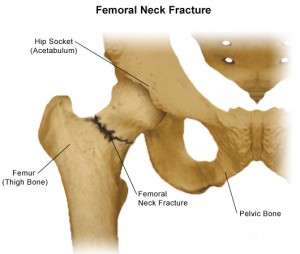 When Ms. S was admitted to Mount Clemens Regional Medical Center on March 13, 2011, her doctor indicated that she was a high risk for falling. Physical therapy assessed Ms. S and also found that she was a high fall risk because her gait (walk) and muscle strength were both impaired. Physical therapy noted that Ms. S required a wheelchair to move around.
When Ms. S was admitted to Mount Clemens Regional Medical Center on March 13, 2011, her doctor indicated that she was a high risk for falling. Physical therapy assessed Ms. S and also found that she was a high fall risk because her gait (walk) and muscle strength were both impaired. Physical therapy noted that Ms. S required a wheelchair to move around.
Nursing staff also assessed Ms. S for falls, but that assessment was inaccurate. The nursing assessment stated Ms. S was at moderate risk for falling, that her gait was normal, and she did not require the use of a device to assist her when walking. Had nursing accurately assessed Ms. S, her care plan would have included appropriate safety measures to prevent her from falling, including the use of a bedpan. Instead, Ms. S’s care plan included the use of a bedside commode.
The evening of March 15, 2011, Ms. S appeared confused and in disbelief that she was in the hospital. In addition to this confusion, nursing staff negligently continued to allow Ms. S to use a bedside commode rather than assisting her with a bedpan, putting her further at risk for a fall injury.
Ms. S attempted to get herself out of bed the next morning to use the commode without assistance, felt dizzy, and fell to the ground onto her left hip. Ms. S’s femur bone was broken at the neck, the point where it meets the hip joint.
An orthopedic surgeon repaired Ms. S’s fracture using internal fixation devices to hold her hip together. Unfortunately, Ms. S began experiencing multiple complications arising from the fracture and the surgical repair including intense pain, severe infections of the blood and skin, bone infection (osteomyelitis), and limited mobility. Because of the complications, she had two more surgeries to remove the orthopedic hardware and then had to have another surgery to remove a portion of her left femur bone. These complications quickly led to a decline in Ms. S’s quality of life. Eventually, Ms. S lost the ability to feed herself and needed to be fed through a tube surgically inserted into her stomach from the outside of her body (PEG tube).
Months of constant, whole-body inflammation and infection (sepsis) put Ms. S’s body into shock. Ms. S died on September 30, 2011 from cardiopulmonary arrest due to the sepsis and osteomyelitis resulting from the hip fracture.
Nursing staff breached their duty of care by not adequately assessing Ms. S’s needs and negligently failing to prevent her from falling and breaking her hip.
Jules Olsman and Donna MacKenzie have filed suit on behalf of Ms. S’s family against Mount Clemens Regional Medical Center.
Standard of Practice or Care in Medicine
There is a reasonable expectation that nurses and physicians will practice medicine within parameters ordinarily accepted by all practitioners in their profession. Standard of care is the caution, attention, and watchfulness that a reasonable practitioner in similar circumstances would exercise in providing care to a patient. Failure to act within the professionally accepted standard of care is negligent, and can have dire consequences for a patient.
In medical malpractice lawsuits, applicable standards of care for the case are outlined in an affidavit of merit that is signed by a qualified expert witness, and filed with the lawsuit. Specific examples of how a medical professional breached the applicable standards of care are also explained in the affidavit of merit.
A breach of the standard of care is one of the first things that our office investigates to determine whether a potential case exists. Our team of nurses and lawyers examines the medical records page-by-page.